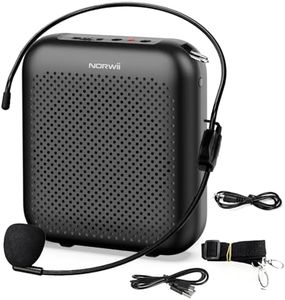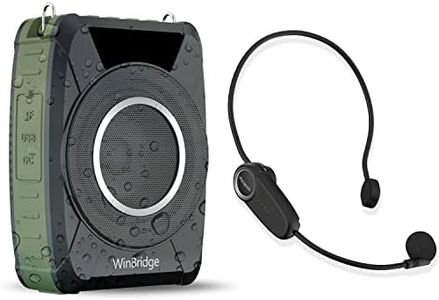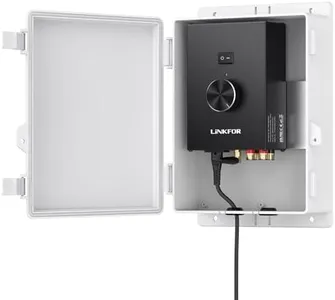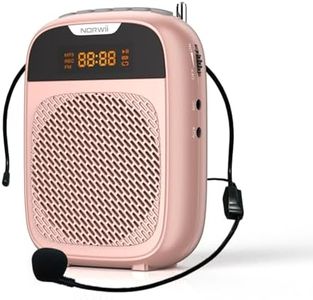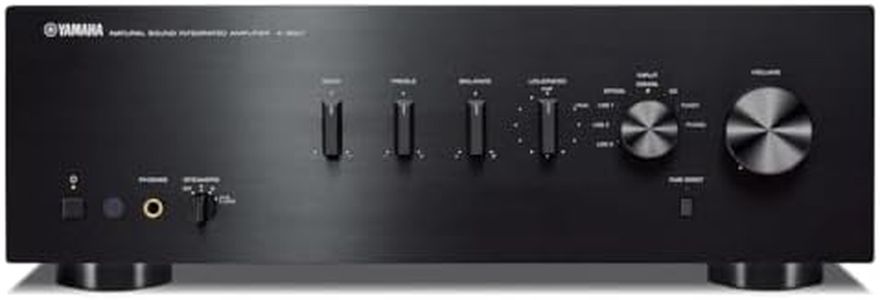Top 10 Dj Amplifiers Deals Right Now
Crown
5%OFF
Crown XTi4002 Two-channel, 1200-Watt at 4Ω Power Amplifier
Our technology thoroughly searches through the online shopping world, reviewing hundreds of sites. We then process and analyze this information, updating in real-time to bring you the latest top-rated products. This way, you always get the best and most current options available.

Our Top Picks
Crown XTi4002 Two-channel, 1200-Watt at 4Ω Power Amplifier
Most important from
110 reviews
The Crown XTi4002 is a solid choice for DJs seeking a reliable power amplifier. With a power output of 1200 watts at 4Ω and even more at lower impedance, it offers ample power for various setups. This amplifier excels with its Peak x Plus Limiters, ensuring that your sound remains clean and protected from distortion, which is crucial during performances. The Enhanced Subharmonic Synth section is another great feature, allowing for tailored low-frequency adjustments that can enhance the music experience in large venues.
One of the standout aspects is its cooling system, featuring three user-defined fan modes that allow you to adjust the cooling performance based on your specific needs. This is particularly useful during long sets to prevent overheating, ensuring consistent performance.
In terms of connectivity, the XTi4002 provides a variety of inputs and outputs, including multiple XLR connections and Speakon outputs, which contribute to its versatility in different settings. The cast-aluminum handles not only enhance durability but also make transportation easier, a key consideration for mobile DJs.
Most important from
110 reviews
Great Choice
Crown, 2 Two-channel-800W at 4Ω Power Amplifier, Gray, 800-Watts (XTi2002)
Most important from
110 reviews
The Crown XTi 2002 amplifier is a solid choice for DJs needing reliable power and flexibility. It delivers a strong 800 watts per channel at 4 ohms, which means it can easily drive most DJ speakers with enough volume and clarity. The amplifier offers user-adjustable fan modes, allowing you to control the cooling system to balance noise and performance depending on your setup, which is handy for both quiet gigs and high-energy events. Its aluminum build with integrated handles makes it durable and easy to transport.
Users can also benefit from 50 presets and a subharmonic synth section for tuning bass frequencies to suit different types of music or venues. The locking power cord clip ensures a secure connection, reducing the chance of accidental power loss during performances. The amplifier was first released in 2011, so it may lack some newer features found in more recent models. Weighing around 18.5 pounds, it is moderately portable but not the lightest option available.
This amplifier is well-suited for DJs who want dependable power and straightforward controls without needing the latest technology features.
Most important from
110 reviews
Crown Power Amplifier, 650-Watts (XLS2002)
Most important from
521 reviews
The Crown Power Amplifier, 650-Watts (XLS2002), is a solid choice for DJs looking for a powerful and efficient amplifier. It delivers a substantial 650 watts of power at 4 ohms, ensuring strong performance for most DJ setups. One of its standout features is the Class D amp with Crown's Drive Core technology, which contributes to its lightweight nature, coming in at under 11 pounds. This makes it highly portable and easy to handle during setups and breakdowns.
The amplifier also boasts higher DSP capabilities, offering more control over your sound with features like a band-pass filter per channel. This can be particularly useful for fine-tuning your audio in different environments. Additionally, the selectable input sensitivity options (1.4Vrms and 0.775Vrms) allow for flexibility in driving the amp to its full potential with various input sources. The cooling system is designed to minimize distractions, with the option to turn off all LED indicators except for clip and thermal, which is beneficial in dark venues.
On the connectivity front, it includes balanced XLR, TRS, and RCA inputs, as well as Speakon outputs, providing versatility for different equipment setups. The Crown Power Amplifier, 650-Watts (XLS2002), is well-suited for DJs who need a reliable, portable, and powerful amplifier with advanced control features, though users should consider their specific sound quality needs and venue size before making a decision.
